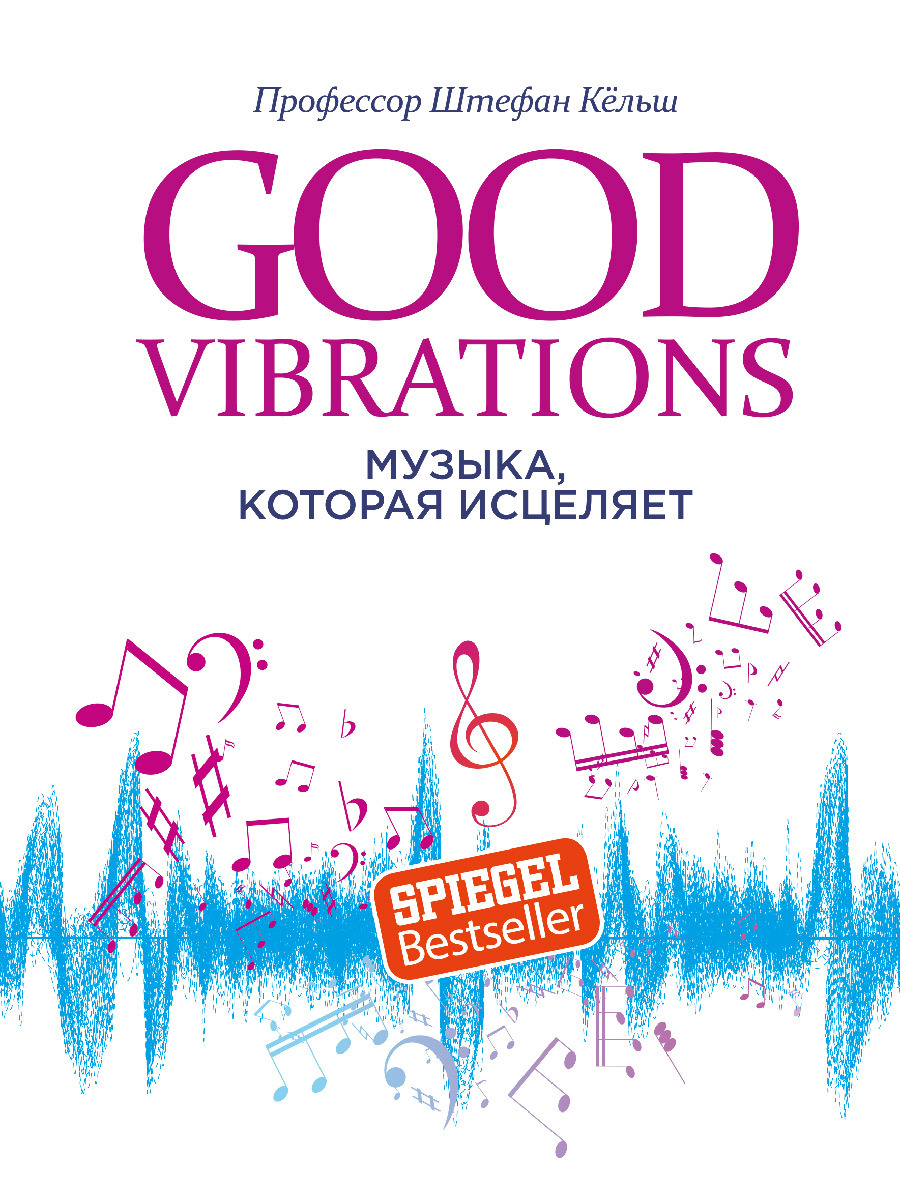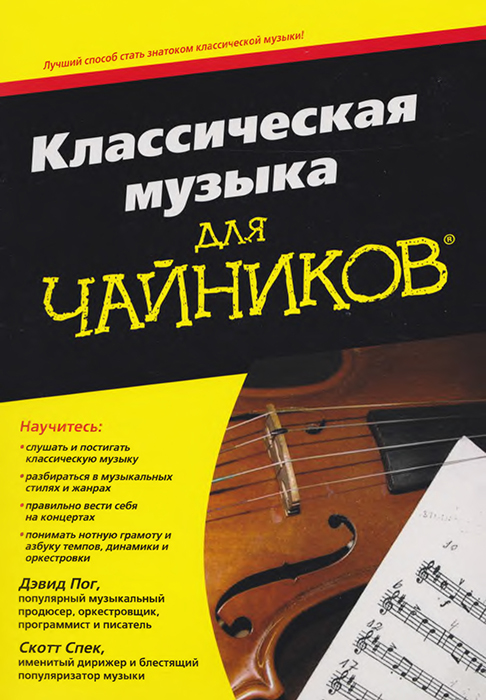Читать книгу - "Good Vibrations. Музыка, которая исцеляет - Штефан Кёльш"
Аннотация к книге "Good Vibrations. Музыка, которая исцеляет - Штефан Кёльш", которую можно читать онлайн бесплатно без регистрации
Эта книга рассказывает о влиянии музыки на физическое и ментальное здоровье человека. Профессор Кёльш утверждает, что музыка лежит в основе человеческой сущности и что музыкальность присуща каждому человеку. Опираясь на новейшие научные исследования, автор рассказывает о влиянии музыки на гормональную, иммунную, вегетативную нервную систему; о том, что происходит в мозге при прослушивании музыки; о влиянии музыки на состояние здоровья и о ее способности лечить болезни и бороться с зависимостями. Вы найдете здесь много практических советов, упражнений и даже списки для прослушивания. Не обязательно читать всю книгу целиком. Вы можете прочесть только нужный вам раздел или знакомиться с частями в любой последовательности. Для всех, кто любит музыку и желает укрепить здоровье.
58
Howren, M. B., Lamkin, D. M., & Suls, J. (2009): Associations of depression with C-reactive protein, IL-1, and IL-6: a meta-analysis, Psychosomatic Medicine, 71 (2), S. 171–186.
59
Chida, Y., & Steptoe, A. (2009): The association of anger and hostility with future coronary heart disease: a meta-analytic review of prospective evidence, Journal of the American College of Cardiology, 53 (11), S. 936–946.
60
Kiecolt-Glaser, J. K., McGuire, L., Robles, T. F., & Glaser, R. (2002): Emotions, morbidity, and mortality: new perspectives from psychoneuroimmunology, Annual Review of Psychology, 53 (1), S. 83–107.
61
Fritz, C., Curtin, J., Poitevineau, J., Morrel-Samuels, P., & Tao, F. C. (2012): Player preferences among new and old violins, Proceedings of the National Academy of Sciences, 109 (3), S. 760–763.
62
Plassmann, H., O’Doherty, J., Shiv, B., & Rangel, A. (2008): Marketing actions can modulate neural representations of experienced pleasantness, Proceedings of the National Academy of Sciences, 105 (3), S. 1050–1054.
63
Sven Oliver Müller (2014): Das Publikum macht die Musik. Musikleben in Berlin, London und Wien im 19. Jahrhundert, Göttingen, Vandenhoeck & Ruprecht.
64
Lundqvist, L. O., Carlsson, F., Hilmersson, P., & Juslin, P. N. (2009): Emotional responses to music: Experience, expression, and physiology, Psychology of Music, 37 (1), S. 61–90.
65
ABC News, 7. Sept. 2006. Exclusive: Mother of Tears in Heaven Inspiration Shares Story (abcnews.go.com/2020/Entertainment/story?id = 2404474&page = 1).
66
Klimecki, O. M., Leiberg, S., Lamm, C., & Singer, T. (2012): Functional neural plasticity and associated changes in positive affect after compassion training, Cerebral Cortex, 23 (7), S. 1552–1561.
67
Schellenberg, E. G. (2006): Long-term positive associations between music lessons and IQ, Journal of Educational Psychology, 98 (2), S. 457; Schellenberg, E. G., Corrigall, K. A., Dys, S. P., & Malti, T. (2015): Group music training and children’s prosocial skills, PLoS One, 10 (10), e0141449.
68
Page, K. M., & Nowak, M. A. (2002): Empathy leads to fairness, Bulletin of Mathematical Biology, 64 (6), S. 1101–1116; Rumble, A. C., Van Lange, P. A., & Parks, C. D. (2010): The benefits of empathy: When empathy may sustain cooperation in social dilemmas, European Journal of Social Psychology, 40 (5), S. 856–866.
69
Taruffi, L., Pehrs, C., Skouras, S., & Koelsch, S. (2017): Effects of sad and happy music on mind-wandering and the default mode network, Scientific Reports, 7 (1), S. 14396.
70
Williams, J., Stönner, C., Wicker, J., Krauter, N., Derstroff, B., Bourtsoukidis, E., ... & Kramer, S. (2016): Cinema audiences reproducibly vary the chemical composition of air during films, by broadcasting scene specific emissions on breath, Scientific Reports, 6, S. 25464.
71
New York Times от 10.02.2018 (www.nytimes.com/2018/02/10/opinion/sunday/favorite-songs.html).
72
Galvan, A. (2010): Adolescent development of the reward system, Frontiers in Human Neuroscience, 4, S. 6.
73
Finke, C., Esfahani, N. E., & Ploner, C. J. (2012): Preservation of musical memory in an amnesic professional cellist, Current Biology, 22 (15), R591–R592.
74
Kashino, M. (2006): Phonemic restoration: The brain creates missing speech sounds, Acoustical Science and Technology, 27(6), S. 318–321.
75
Witek, M. A., Clarke, E. F., Wallentin, M., Kringelbach, M. L., & Vuust, P. (2014): Syncopation, body-movement and pleasure in groove music, PLoS One, 9 (4), e94446.
76
Koelsch, S., Kilches, S., Steinbeis, N., & Schelinski, S. (2008): Effects of unexpected chords and of performer’s expression on brain responses and electrodermal activity, PLoS One, 3 (7), e2631.
77
Steinbeis, N., Koelsch, S., & Sloboda, J. A. (2006): The role of harmonic expectancy violations in musical emotions: Evidence from subjective, physiological, and neural responses, Journal of Cognitive Neuroscience, 18 (8), S. 1380–1393.
78
Lehne, M., Rohrmeier, M., Gollmann, D., & Koelsch, S. (2013): The influence of different structural features on felt musical tension in two piano pieces by Mozart and Mendelssohn, Music Perception: An Interdisciplinary Journal, 31 (2), S. 171–185.
79
Lehne, M., Rohrmeier, M., & Koelsch, S. (2013): Tension-related activity in the orbitofrontal cortex and amygdala: an fMRI study with music, Social Cognitive and Affective Neuroscience, 9 (10), S. 1515–1523.
80
Mears, D., & Pollard, H. B. (2016): Network science and the human brain: using graph theory to understand the brain and one of its hubs, the amygdala, in health and disease, Journal of Neuroscience Research, 94 (6), S. 590–605.
81
Taruffi, L., Pehrs, C., Skouras, S., & Koelsch, S. (2017): Effects of sad and happy music on mind-wandering and the default mode network, Scientific Reports, 7 (1), S. 14396.
82
Koelsch, S., Bashevkin, T., Kristensen, J., Tvedt, J., & Jentschke, S.: Heroic music stimulates empowering thoughts during mind-wandering. Рукопись, предложенная к изданию.
83
Holt-Lunstad, J., Robles, T. F., & Sbarra, D. A. (2017): Advancing social connection as a public health priority in the United States, American Psychologist, 72 (6), S. 517.
84
Gallace, A., & Spence, C. (2010): The science of interpersonal touch: an overview, Neuroscience & Biobehavioral Reviews, 34 (2), S. 246–259.
85
Steinbeis, N., & Koelsch, S. (2008): Understanding the intentions behind man-made products elicits neural activity in areas dedicated to mental state attribution, Cerebral Cortex, 19 (3), S. 619–623.
86
Page, K. M., & Nowak, M. A. (2002): Empathy leads to fairness, Bulletin of Mathematical Biology, 64 (6), S. 1101–1116; Rumble, A. C., Van Lange, P. A., & Parks, C. D. (2010): The benefits of empathy: When empathy may sustain cooperation in social dilemmas, European Journal of Social Psychology, 40 (5), S. 856–866.
87
Tarr, B., Launay, J., & Dunbar, R. I. (2014): Music and social bonding: self-other merging and neurohormonal mechanisms, Frontiers in Psychology, 5, S. 1096.
Прочитали книгу? Предлагаем вам поделится своим впечатлением! Ваш отзыв будет полезен читателям, которые еще только собираются познакомиться с произведением.
Оставить комментарий
-
 Вера Попова27 октябрь 01:40
Любовь у всех своя-разная,но всегда это слово ассоциируется с радостью,нежностью и счастьем!!! Всем добра!Автору СПАСИБО за добрую историю!
Любовь приходит в сентябре - Ника Крылатая
Вера Попова27 октябрь 01:40
Любовь у всех своя-разная,но всегда это слово ассоциируется с радостью,нежностью и счастьем!!! Всем добра!Автору СПАСИБО за добрую историю!
Любовь приходит в сентябре - Ника Крылатая
-
 Вера Попова10 октябрь 15:04
Захватывает,понравилось, позитивно, рекомендую!Спасибо автору за хорошую историю!
Подарочек - Салма Кальк
Вера Попова10 октябрь 15:04
Захватывает,понравилось, позитивно, рекомендую!Спасибо автору за хорошую историю!
Подарочек - Салма Кальк
-
 Лиза04 октябрь 09:48
Роман просто супер давайте продолжение пожалуйста прочитаю обязательно Плакала я только когда Полина искала собаку Димы барса ♥️ Пожалуйста умаляю давайте еще !))
По осколкам твоего сердца - Анна Джейн
Лиза04 октябрь 09:48
Роман просто супер давайте продолжение пожалуйста прочитаю обязательно Плакала я только когда Полина искала собаку Димы барса ♥️ Пожалуйста умаляю давайте еще !))
По осколкам твоего сердца - Анна Джейн
-
 yokoo18 сентябрь 09:09
это прекрасный дарк роман!^^ очень нравится
#НенавистьЛюбовь. Книга вторая - Анна Джейн
yokoo18 сентябрь 09:09
это прекрасный дарк роман!^^ очень нравится
#НенавистьЛюбовь. Книга вторая - Анна Джейн





